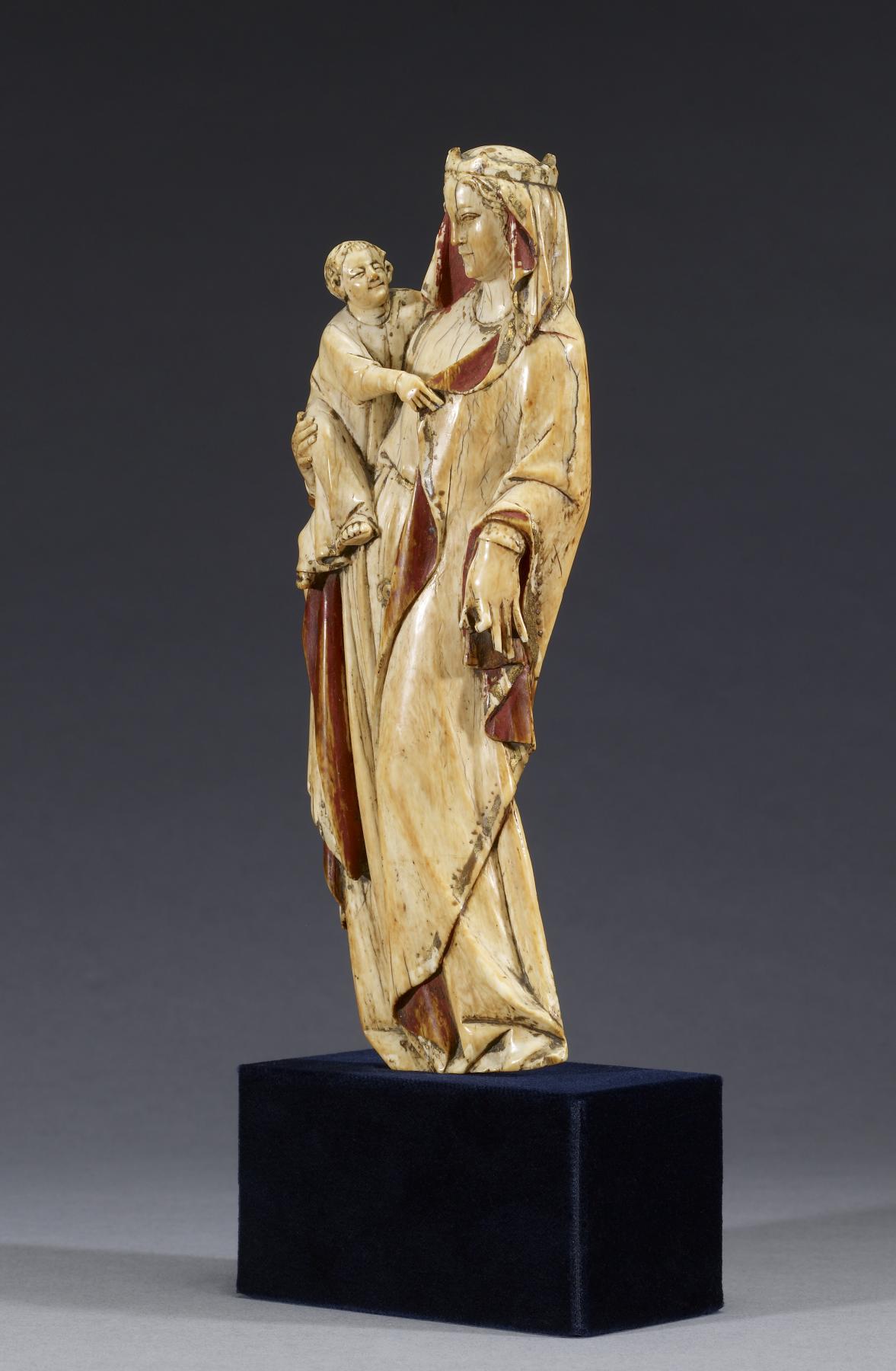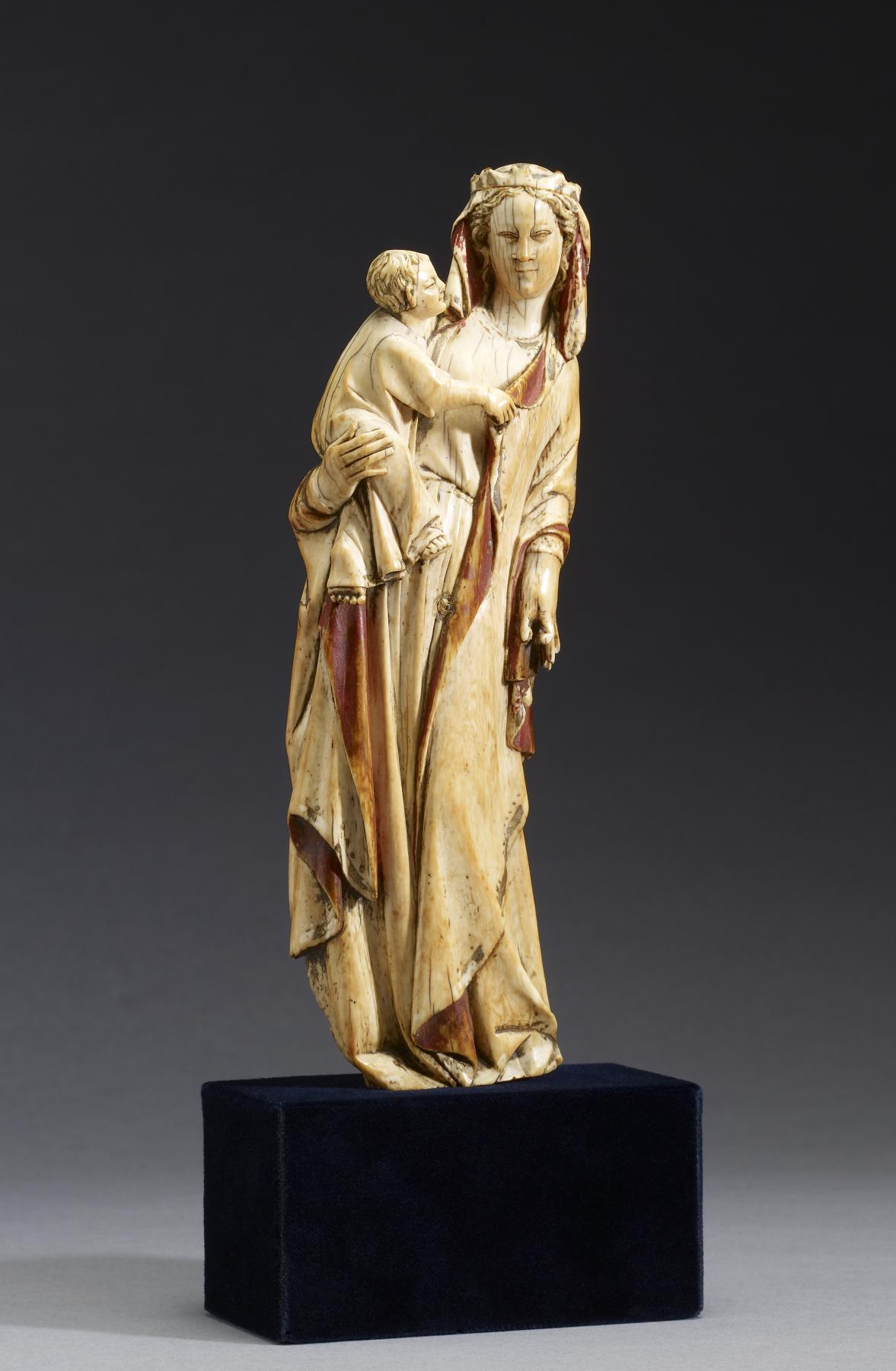Virgin and Child
(Medieval Europe )
This Virgin and Child was carved from a curved piece of ivory corresponding to the shape of the original elephant tusk. Only the front is carved, suggesting that it was attached to a flat surface such as a shrine or diptych. A few areas of color are preserved from the original polychromy (paint). The smooth drapery is a German feature that differs from the rippled and pleated fabric of French statuettes.
Provenance
Provenance (from the French provenir, 'to come from/forth') is the chronology of the ownership, custody, or location of a historical object. Learn more about provenance at the Walters.
Professor Paul Soubeiran de Pierres, Montpellier, France; Professor Paul Soubeiran de Pierres Sale, New York, December 8, 1927, lot 69; Henri Daguerre, Paris; Henry Walters, Baltimore, 1928; Walters Art Museum, 1931, by bequest.
Exhibitions
| 1996 | Smith College Museum of Art Early Medieval Research. Smith College Museum of Art, Northampton. |
| 1983-1984 | Ivory: The Sumptuous Art. The Walters Art Gallery, Baltimore. |
Geographies
Germany, Rhineland (Place of Origin)
Measurements
H: 8 1/4 x W: 3 1/8 x D: 1 1/4 in. (21.2 x 8 x 3.2 cm)
Credit Line
Acquired by Henry Walters, 1928
Location in Museum
Accession Number
In libraries, galleries, museums, and archives, an accession number is a unique identifier assigned to each object in the collection.
In libraries, galleries, museums, and archives, an accession number is a unique identifier assigned to each object in the collection.
71.233






